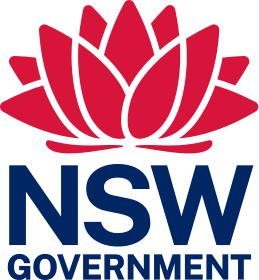Point to Point Transport
Point to point transport includes:
- Taxis
- Hire cars
- Tourist services
- Rideshare services
- Other vehicles with 12 seats or less (including the driver) that provide passenger transport services for a fare.
Under point to point transport law, taxi service providers and booking service providers (such as traditional hire cars and rideshare) have a primary duty of care to ensure the safety of their services.
Service providers have greater flexibility in how they ensure their safety obligations are met, as they are best placed to identify, manage and mitigate risks associated with their services.
For more, visit the website of the industry regulator, the Point to Point Transport Commissioner.
Reform of point to point transport regulation
Point to point transport modes and service offerings have changed dramatically in recent years.
A new regulatory framework for point to point transport began on 1 November 2017, following a reform process that began in mid-2015.
In 2020, a review was undertaken to assess whether further structural changes were required. Consultation on this review has now closed. The report has been finalised. The NSW Government will introduce a package of reforms in response to the review recommendations.
Quick links
- Passengers - visit Transport Info.
- Customers with a disability - visit Travelling by wheelchair accessible taxi and Taxi Transport Subsidy Scheme.
- Taxi service providers and booking service providers - visit the Point to Point Transport Commissioner website, or call the Industry Contact Centre on 131 727.
- Point to point transport drivers with questions about driver licences and vehicle registration - visit Roads and Maritime Services website.
- My Records
Taxis
Transport for NSW is responsible for a number of key matters for the taxi industry, including setting maximum rank and hail fares and deciding the number of licences that can be released into the market.
For more, see our Taxi information page.
Fares
Fares for booked services (including booked taxi services, traditional hire car, ridesharing and similar services) are not regulated.
All booking service providers can set their own fares - but they need to provide passengers with a fare estimate before the trip begins, along with information identifying the driver and the vehicle.
Booked fares for Taxi Transport Subsidy Scheme (TTSS) customers remain regulated.
Maximum fares for rank and hail taxi services remain regulated. For more about the current fares order, see our Taxi Information page.
For more on booked fares and taxi fares, see the fact sheets below.
Fares Fact Sheets
- Fares Fact Sheet - Booked services (PDF, 169.63 KB)
- Fares Fact Sheet - Booked services (DOCX, 173.46 KB) accessible version
- Fares Fact Sheet - Taxis (PDF, 170.04 KB)
- Fares Fact Sheet - Taxis (DOCX, 173.6 KB) accessible version
Fact sheets on matters such as safety obligations for service providers can be found on the Point to Point Transport Commissioner website.
For customers with disability
The NSW Government has committed $15.5 million a year to a 5-point plan to improve point to point transport services for customers with disabilities.
Wheelchair Accessible Taxi (WAT) licence fees in metro areas have been reduced to zero, in line with the rest of NSW.
Other initiatives that have been in place from 1 July 2016 include:
- Increasing the maximum Taxi Transport Subsidy Scheme (TTSS) subsidy from $30 to $60 per trip
- Increasing the WAT driver incentive payment from $7.70 (ex. GST) to $15 (ex. GST) per trip
- Expanding the WAT interest-free loan scheme from $1 million to $5 million to help get more WATs on the road
- Providing a fully subsidised central booking service for WATs in Sydney, saving businesses that provide these services $2,130 per year.
In February 2020, Transport for NSW released the findings of a review of Transport Disability Incentives and Subsidies (TDIS), looking at how to improve subsidies and incentives for point to point transport services for people with a disability. To find out more, see Transport Disability Incentives and Subsidies.
